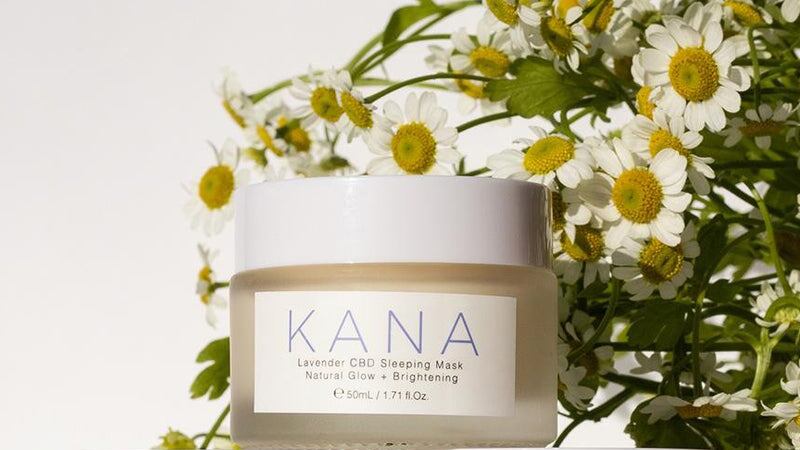While the historical use of cannabis includes recreational, medicinal and industrial purposes, recent years have seen an increased focus on its medicinal components. The emerging role of cannabinoids as a novel therapeutic approach to various illnesses and conditions, especially in dermatology, is a key area of interest for researchers.
In recent breakthroughs, the therapeutic application of cannabinoids has garnered significant attention for their ability to interact with the human endocannabinoid system within the skin, offering hope for conditions such as eczema, psoriasis, acne, pruritus, hair disorders and even skin cancer.
To determine the veracity of these findings and further explore cannabinoids’ skin and hair health potential, researchers at the Catholic University of Korea conducted a study into the growing body of research on cannabinoids.
The study revealed promising outcomes in the treatment of dermatologic conditions using cannabinoids, with dermatologists particularly intrigued by the anti-inflammatory properties exhibited by these compounds. According to experts, these properties could open new avenues for potential skin and hair therapies.
Homeostasis and dermatitis
The endocannabinoid system, which consists of endocannabinoids, receptors (CB1R and CB2R) and enzymes, plays a pivotal role in skin homeostasis. Researchers have identified CB1R and CB2R receptors in keratinocytes, mast cells, hair follicles and sensory nerve fibres in the skin. The dysregulation of the endocannabinoid system has been linked to various dermatological diseases.
Studies have found an association between CB1R and CB2R and allergic contact dermatitis — CB1R receptor antagonists tend to increase pro-allergic chemokines, suggesting a link between CB1R and allergic dermatitis.
Additionally, both CB1R and CB2R play crucial roles in the patho-physiology of atopic dermatitis. CB1R agonists show potential in reducing inflammation and promoting the recovery of the epidermal barrier, while CB2R agonists exhibit varying effects that warrant further investigation.
Palmitoylethanolamide (PEA), an endocannabinoid-like lipid mediator, has shown anti-pruritic and anti-inflammatory effects in clinical trials. Studies have indicated its potential as a promising treatment for atopic dermatitis.
Experimental studies have demonstrated the anti-inflammatory effects of the phytocannabinoid cannabidiol (CBD) in allergic contact dermatitis, with clinical studies supporting the potential benefits of topical CBD application in reducing eczema scores and improving skin conditions in patients.
At the same time, the Δ-9-tetrahydrocannabinol (better known as THC) has shown anti-inflammatory effects in in vitro experiments and animal models of allergic contact dermatitis. However, the researchers also noted that further pre-clinical and clinical studies would be needed to confirm its efficacy.
Pruritis, psoriasis and acne
When exploring the impact of cannabinoids on other skin conditions, the researchers observed that CB1R and CB2R and transient receptor potential (TRP) ion channels played a crucial role in modulating pruritic responses. Cannabinoid receptor agonists have demonstrated anti-pruritic effects in various in vivo studies, offering potential therapeutic options for dermatological diseases associated with itching.
At the same time, cannabinoids such as CBD and THC have exhibited anti-psoriatic effects by inhibiting keratinocyte proliferation and suppressing inflammatory cytokines. Clinical trials have shown promising results in terms of cannabinoids’ potential to improve Psoriasis Severity Index scores.
Furthermore, endocannabinoids have been found to influence lipogenesis and inflammatory responses in sebocytes, indicating their potential as therapeutic agents for acne and seborrhoea. Clinical studies have also supported the anti-lipogenic, anti-inflammatory and anti-microbial effects of cannabinoids in treating acne.
Hair growth, skin cancer and skin ageing
When looking at cannabinoids’ effects on hair growth, the researchers discovered that CB1R and CB2R were differentially distributed in hair follicles, thereby impacting hair growth. CB1R antagonists may counteract hair loss, while CBD has demonstrates variable effects on hair growth pathways. Clinical studies have also suggested the potential of cannabinoids, including CBD, in promoting hair growth.
Cannabinoids have even shown promise in managing both melanoma and non-melanoma skin cancer by inducing apoptosis in melanoma cells. To this end, CB1R and CB2R agonists have demonstrated anti-cancer effects in pre-clinical studies, highlighting their potential as cytotoxic agents.
Additionally, CB1R and CBD play roles in skin ageing, with CB1R deficiency associated with ageing-related changes and CBD having exhibited anti-ageing properties by stimulating cell growth, reducing senescence and improving wound-healing.
Conclusion on cannabinoids
The researchers underscored in the study the vast potential of cannabinoids in dermatological therapy, emphasising the need for further clinical trials to validate existing findings and pave the way for ground-breaking treatments in skin and hair health.
They concluded: “Pre-liminary studies indicate that cannabinoids can improve eczema, acne, pruritus, psoriasis, hair growth and skin cancer and have anti-ageing effects on the skin. However, the pharmacology of cannabinoids in controlling skin diseases is complex and not yet completely understood.
“There are several clinical trials that show the potential benefits of cannabinoids in various dermatologic diseases. Notably, cannabinoids have recently expanded their presence in the market, shifting from cosmetics that alleviate skin inflammation to encompass anti-ageing and hair treatment products. Clinical trials involving cannabinoids for pain, inflammation and cancer are actively ongoing, with a growing interest in their potential application in conditions that extend beyond skin concerns.”
Source: International Journal of Molecular Sciences
“Cannabinoids and Their Receptors in Skin Diseases”
https://doi.org/10.3390/ijms242216523
Authors: Eun Hee Yoo, et al.




